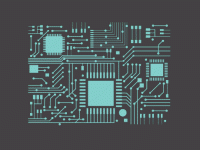The DIY World of Maker Tools and Their Uses
Your content has been saved!
Go to My Saved Content.The Maker movement is spreading through schools. You'll see many tools becoming part of unique maker ecosystems in schools based upon teacher expertise and student interests. (For more about the Maker movement read How the Maker Movement is Moving into Classrooms.)
Let’s look at the most common tools being used in makerspaces.
3D Printers
These devices have a tremendous amount of PR value, so having them can create a "buzz" around the makerspace. Although 3D printers have the issues of being slow, using material that's a bit expensive, and needling to be closely monitored, they have created a groundswell of interest. (If you've heard the term MakerBot, it's just one brand name -- there are many 3D printers with different product names.)
Vinyl Cutters
Recently named the top tool for makerspaces, the traditional vinyl cutter can be purchased for several hundred dollars. Stickers, signs, banners, stencils, silkscreens, and more can be created with even low-end vinyl cutters. The fast print time means that more students can be engaged in printing and sharing with them.
Laser Cutters
Using Inkscape and some new lower-end laser cutters can get expensive, particularly if you need to provide the extra ventilation required for a laser cutter. However, these tools are popular in makerspaces to make acrylic enclosures for robotics, nice signs, and permanent words etched in whiteboard material.
The Return of the Woodshop
An interesting comment from those installing 3D printers in schools is that young people today don't know how things are put together. Some schools are having students construct with foam board first, and others are encouraging them to build with wood. A real-world perspective of how things will fit together is required in order to design and make in 3D. (See Edutopia's post about how woodshops are making a comeback.)
The Return of Home Ec
Some makerspaces having sewing machines and other craft materials, such as the ever-popular duct tape (including the new patterned stuff.) The skillset that was once taught in home ec classes intertwines with other more technical skills as students design and create robots from the circuitry to the embellishment. Indeed, the cachophony of voices to "bring back home ec” are rising, and some elements are being included in makerspaces.
MaKey MaKey
Marketed as an "invention kit for everyone," this cool tool was funded by a Kickstarter campaign. You can turn everyday objects into touchpads and combine them with the Internet. Want to create a banana piano or to play Pac-Man using a paper drawing? Yes, you can do that. At ISTE (in the video above), we made a human MaKey MaKey piano as Josh Ajima (@designmaketeach) helped us connect. All you need is something that can conduct just a small amount of electricity. Beach balls, lemons, and even plants, grandmas, and coins have become part of MaKey MaKey inventions.
Hummingbird Robotics Kit
Like the MaKey MaKey, this system from @birdbraintech is one that can be created with a minimal amount of programming. I played with the Hummingbird at ISTE, and within a few moments, with the help of my friends Lee Kolbert and Lisa Thumann, we had a mobile "Istebot" whose eye color changed by how close we were to the distance sensor. (In the following video, note the ISTE servo motor on top of the robot’s head.)
Arduino Boards
Arduino sells motherboards that can be programmed in so many ways. While they may require a bit more making than some of the pre-assembled kits, students who know how to program and more advanced makers are using these boards to create anything. DIY magazines from Instructables to Popular Mechanics are sharing projects with these easy-to-program boards.
Raspberry Pi
My nephew bought a Raspberry Pi and used online instructions to make his own Mini-Minecraft server. The Raspberry Pi is a mini-computer, and the hard drive is an SD card. A massive community has emerged around this easy to use mini-computer that costs under $100.
Lego Mindstorms and NXT Challenges
Legos have always fascinated kids. While some have tried, printing Legos doesn't work well because of the precision needed to attach these pieces. As Stephan Turnipseed, President Emeritus of Lego Education, told me at ISTE, many are using 3D printers to print embellishments for their Legos, and they do a great job of teaching kids how things fit together.
But the challenges, particularly the NASA challenges, have students constructing, building, and competing. The robust support materials and lesson plans are helpful for educators. You can even use making to teach writing with their Storybuilder kit and app.
Minecraft
Minecraft is a makerspace because there are apps that let you build in this world and then pull the 3D object out and print it. Minecraft EDU is a fantastic way to teach 3D space because it is so engaging. It also teaches computational thinking as students use "recipes" to create things.
And So Much More . . .
Duct tape, cardboard, crafting supplies, and soldering kits are among the many materials and tools being used in makerspaces -- along with lots of plastic bins and labels (see the video above). There is so much more to the Maker movement, but one thing is certain. Educators and librarians who want their schools and libraries to stay relevant and engaging will read, learn, and reinvent themselves. We talk about ways to engage parents and students in learning. Here it is.
Excellent schools around the world are connecting and collaborating as they make. Excellent 21st century schools will incorporate aspects of the maker movement in their design and curriculum.
How are you making? Please share what you're doing in the comments.
